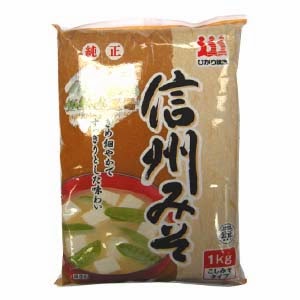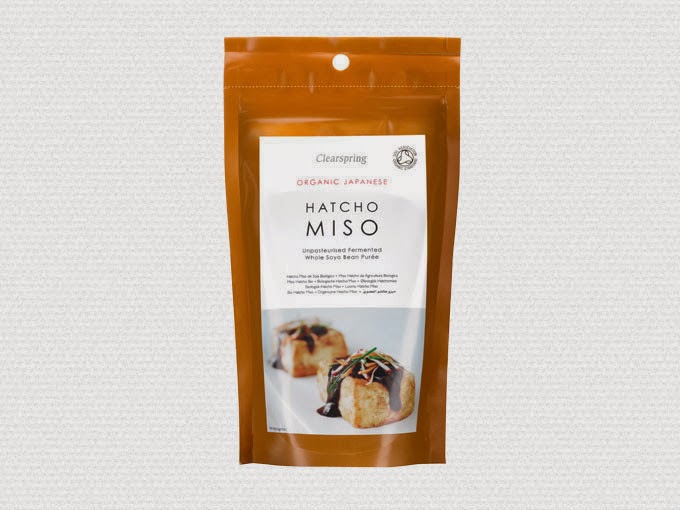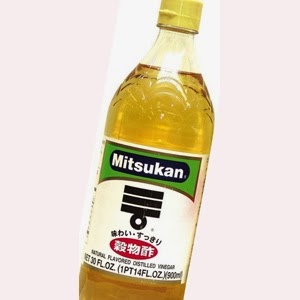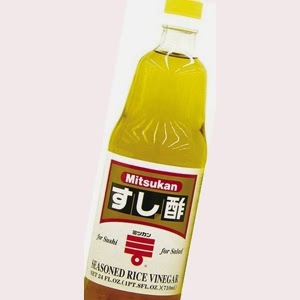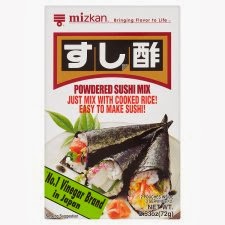Miso - fermented soy beans paste
Miso is fermented soy beans paste combined with Kouji - fermentation starter made by rice. It usually takes over a year to naturally ferment the boiled soy beans, therefore requires enough salt to preserve it.In general, miso has natural sweetness, slight sourness, and at end quite strong saltiness that required for preserving the fermented product. The texture is usually smooth and creamy, combined with the beans natural sweetness, somehow you may feel similarity to Mediterranean humos.
There are a lot of variety per what is in the product e.g. barley, Soba beans, chili etc. or where the product produced from e.g. Sinshu (central Japan), Hokkaido (Hokkaido-island), Saikyo (west side Japan), and how it has been processed e.g. organic, pure soy beans, very matured, sweetened etc.
There are 3 main types: white, red and dark brown.
The white and red miso are mostly made from both rice (Kouji) and soy beans, the colour gets darker by the length of maturating period.
The whiter one has 2 different types in there - one is with shorter processed one with stronger salt, and the other one is with higher rate of Koji, which contains lesser salt and has sweeter taste.
The red type is usually has more matured taste, gets stronger bean smell, sweeter and stronger taste.
The dark brown one usually contains soy beans only; has harder texture and difficult to melt in to soup, stronger bean flavor but with stronger bitterness too.
In general, colder part of Japan makes saltier miso and west side prefer the sweeter miso.
The miso you can find at the any super market does not have very strong fermented smell especially when it is cold, where the real homemade miso often has specific stronger fermented smell and rough texture.
Miso is something that you can produce at your home; the traditional family used to prepare this during the winter time to start using the one after the year, which no longer common among the people living in big town.
Yet, if you travel around Japan, there are uncountable variety of miso that produced in each area with unique taste; we often enjoy buying different kinds and mix them to make our own favorite combinations.
Many people knows that the miso is the main ingredient to make miso soup, however unlike the strong taste that you feel when you try it only by its own, it is salty but has too less flavor to make the soup by its own; therefore generally requires to get some stock taste - we call Dashi - out from Konbu seaweed and fish flakes before adding any miso.
Lately you can find some product that Miso already combined with the stock taste in a pack- to help making miso soup quickly.
Miso loses its flavour if you over cook; to make miso soup (I may describe detail in another post one day) tastier, you make Dashi soup first then cook the chosen ingredients in the Dashi before adding miso paste, then stop the fire before the soup gets totally boiling again.
<Example products you can find in UK>
Easy and good: Marukome restaurant taste (red miso)
This miso has Dashi already combined.
Easy to use, makes most commonly good taste soup.
Majority of Japanese glossary shops carry this product e.g. TK tradings.
Excellent: Saikyo shiro miso
This is an western Japanese style miso, contains higher rate of good quality Kouji, which makes the miso naturally sweeter. It does not contain alcohol usually but has sake aroma slightly.
Most of eastern Japanese include Tokyo region people, like me, use this miso and other general brown miso mixed.
TK trading used to carry this product - then, it became too expensive and now disapeared. Today I no longer can find this product in UK, I just found the another maker's same type product as below at RiceWine shop:
Presumably good: Clearspring Sweet White Miso - apparently Waitrose started to carry this.
I must be honest I've never try this particular product yet. Looking at the description of this product in their web page, this must have followed the Saikyo style miso making.
I'm expecting to try in near feature.
Daily use: Hanamaruki Soy been paste White type (Sinshu style shiro miso)
While ago, Tesco carried this product. Hanamaruki is a well known traditional Miso provider, the product is from Sinshu where the white miso is more saltier than other area. Hope they will carry again. This product does not contain Dashi.
Daily use: Hikari Miso Junsei Sinshu Miso (red miso)
This is at the bottom of market price, however has no lesser taste than the above products. Criticism if I have to say is that those cheaper product has less characteristics and salted quite stronger.
However, like I commented above, we usually mix those cheaper miso with the other miso, especially the one over "unique" miso like country-side style miso or the home made ones.
Unique: Mugi Miso (Barley miso) - Japan Center original
This has usually more gentle sweetness than the regular miso and contains bits of barley remaining, and that makes this type products unique texture. We use this type of product for vegetable dip than making miso soup.
Unique: Clearspring Hatchou Miso
Hatchou Miso is often combined with Mirin - sweeten cooking wine - and used for the following recipes: BBQ Tofu, boiled Konnaku, boiled Daikon, Oven baked aubergine.
It has strong beans flavor with the natural bitterness; when sweeten by Mirin, that gives a vivid contrast against those very simple flavor ingredients. Usually served as a part of source over the foods. You can also use this for general BBQ source and for vegetable dips too.
Miso usually doesn't need to be kept in the refrigerator until you open the package, but most of them are easy to change its colour and flavor by the sun light; so it is ideal to keep it in a cupboard.
Miso can last much longer than soy source with the original taste, however it gets harder. The product contains the active fermentation base - so basically oxygen and warmness will help the product to continue the fermentation process further, and that changes the original miso taste. Once you open the package, it is ideal to keep the package in a tapper-ware or buy the product with sealing pack to keep out air, and must keep it in a refrigerate.




.jpg)
